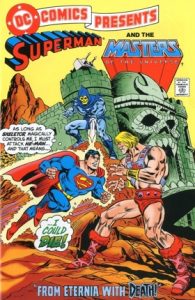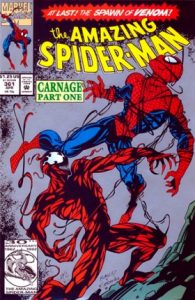All You Need to Know About Variants
Variants. The most beloved and hated subcategories of comic book collecting.
With their low print runs, amazing artwork, and elevated degree of geeky-know-how needed to find them, variants are a huge draw for collectors hunting for the hardest to find books. So what is a “variant?” By strict definition, a variant is a form or version of something that differs in some respect from a standard. But to many seasoned comic collectors, the mere mention of the term can kick-start passionate discussions ranging from whether or not they benefit or damage the industry to “what can actually be considered a variant?” We won’t even try to tackle the former here, but as to the latter, this article will surely help.
Below we’ve included descriptions and histories to sixteen different categories of variants. We’ve also added helpful Pro Tips from our team of seasoned comic collectors to help you find them for your collection. Of course, you could always check out COVRPRICE’s curated Top Variants List and jump right on in.
Before We Start: A Brief History of Variants
First, let’s get into a super quick history of “the variant.” The first modern marketed variant was John Byrne’s MAN OF STEEL #1 in 1986.
 Man of Steel #1 – Cover A Man of Steel #1 – Cover A
|
 Man of Steel #1 – Cover B |
Obviously, this was a price grab by DC to convince collectors to buy not just one, but two copies of MAN OF STEEL, and guess what, it worked… really, really well. Sales shot up, so publishers began introducing more comic variants, adding new gimmicks each year to stand out on crowded shelves and grab few extra dollars from collectors and fans. “The variant” changed over the years as the industry fluctuated and evolved. Today, the variety of comic variants is pretty staggering. So to help you wade through all the noise, we at COVRPRICE have taken the top sixteen types of variants and have broken them down into the following two categories:
Category 1: Well-Known Variants
- Convention Variants
- Incentive Variants
- Retailer Exclusive Variants
- Diamond Retailer Summit Variants
- Retailer Roundtable Program (RRP) Variants
- Store Variants
Category 2: Lesser Known / Niche Variants:
- Cover Variants
- DC Combo Pack Variants
- DVD Variants
- Error/Recalled Variants
- Foreign Variants
- Mail-Away Variants
- Mark Jeweler Variants
- Newsstand Variants
- Price Variants
- Reprint Variants
- Toy Variants
- Subsequent Printings Variants
- Whitman Variants
Even with these sixteen key categories, please be aware that there are still even more types of comic variants out there, but this list should cover about 90% of what you’ll find.
Well-Known Variants
Convention Variants
|
|
As the name suggests, Convention Variants are sold or distributed at comic book conventions with a very low number of copies printed (aka: print run). The number of copies printed by the publisher can vary greatly, ranging from a prized single issue to well into the thousands. Typically, though, you can expect Convention Variants to sit somewhere between a print run of 500 to 1,000 copies.
The best way to identify a Convention Variant is by finding the logo and year of the specific convention it was sold at on the front or back cover of the comic book. For example, a limited convention variant sold at the San Diego Comic Con 2018 will usually show as SDCC 2018 or SDCC ‘18.
Where to Find Convention Variants:
Yup, you guessed it: you can find Convention Variants at… conventions. Typically, San Diego Comic Con and New York Comic Con tend to have the most popular exclusives. Depending on where the convention is, ask if your local comic shop (LCS) plans on attending. They might be able to pick you up a copy or bring back extra copies to sell in their store. Also, Convention Variants are always pre-sold by multiple eBay sellers (attendees who anticipate getting copies). Keep in mind, that if they sell out or are limited, these pre-orders have a strong likelihood of being canceled.
Pro Tip:
To find the Convention Variant you’re looking for on eBay, make sure you know the convention and year that it was sold. Try using the convention abbreviations in the search first, ie. SDCC = San Diego Comic Con, NYCC = New York Comic Con, ECCC = Emerald City Comic Con (Seattle). For the first search, don’t include the year as it will deliver more results as some sellers may eliminate that it in their title. For popular titles, like Batman, the year will greatly help narrow down the results.
Incentive Variants
|
|
Incentive Variants (briefly mentioned above) were not created for the collector in mind per se. Publishers incentivize local comic shops (LCS) by providing them a special limited cover with new/different artwork at a low cost. The catch is that they have to order a specific number of the standard issue before getting the variant. For example, let’s say a new comic came out and the publisher is offering one Incentive Variant cover at a 1:25 (one in twenty-five) ratio. That retailer would have to order 25 copies of the standard cover to qualify for a single copy of the special cover. Retailers know that collectors want these limited covers and that they will often pay high amounts to obtain them. Their expectation is to break even on the order of the extra standard cover copies with the larger sale of that one variant cover. As you might imagine, this method greatly increases the print run and profit for publishers. In recent times, this practice has evolved and, in some instances, has even produced more extreme ways required to receive an Incentive Variant. For example, in past years a few publishers even asked retailers to rip the covers off a competitor’s title and then mail them in to receive a very limited variant. Today, retailers are often required to order high numbers of a less desired title in order to receive a special variant for a highly desired title.
“Party” variants are a subgroup of the store incentive. If a retailer is large enough to order a significantly large number of copies of a new title and participate in the launch of that title, the retailer receives a “party” variant (as in they are “joining in on the party”) that is qualified by meeting multiple requirements.
Some of the more common Incentive ratios are 1:5, 1:10, 1:25, 1:50 & 1:100. In addition, the denotation on the cover for Incentive Variants can differ. For example, some Incentive Variant covers will state “Variant”, “Variant Edition”, “Incentive Variant” or “RI” (abbreviation for Retailer Incentive). While in other cases, there can be no distinguishable notation at all. It’s worth noting that there’s no easy way to determine a variant’s print run (i.e. the total amount of copies produced by the publisher). Collectors incorrectly take the full print run and divide it by the incentive number (for example, if 100K copies sold then there are 1,000 copies of the 1:100 variant). This math can give a very rough estimate, but the actual number, depending on what a retailer qualified for and then actually ordered, can be significantly lower.
Where to Find Incentive Cover Variants:
Like Cover Variants, Incentive Variants are found at your LCS and online retailers. However, finding the best price is a tad different. We typically recommend that you “buy at ratio.” Meaning, if it’s a 1:25, it should be $25. Anything less is a great buy. If it’s 1:100, expect it to be about $100. This isn’t an exact science but should give you a baseline for price expectations. Less in demand comics can sell for significantly less, where in-demand variants can sell for significantly more. In-demand incentive variants disappear very quickly, often within minutes of opening. Make sure you monitor COVRPRICE’s NEW RELEASES section to find weekly releases. The key to getting the cover you like is by asking your LCS a month (or more) in advance. Also, before buying, make sure you monitor the issue’s estimated market price on COVRPRICE to see what it is actually selling for.
Why You Want It:
Honestly, the most desirable variants are undoubtedly the most expensive modern comics. When you have a mixture of a hot artist, beloved character, and tiny print run making it nearly impossible to find, you have the makings of a nice investment. Plenty of strong (see: heated) discussions over the long term validity can be found anywhere that the word “variant” is mentioned. The truth is, older books have never seen the rarity that modern variants see today. Variants quickly find their way into collections and are rarely seen in the market. With this being the case, what does the future look like for some of these books in 20 or 30 years? Trust us, you WANT variants in your collection.
Pro Tip:
When searching for Incentive Variants at online retailers or eBay, simply search for the title, the issue number and the word “variant”. You can also try using “Retailer Incentive” or the abbreviation “RI,” however sellers tend to keep listing titles pretty straight forward.
Retailer Exclusive Variants
|
|
Not to be confused with Store Variants (mentioned below) where Retailers directly commission and pay for an exclusive cover, “Retailer Exclusives” is a broader category. In fact, it could almost be placed as a subcategory of Incentive Variants (mentioned above) where stores receive variant options for purchasing a certain amount of the standard version.
Retailer Exclusives are made available to retailers who commit to ordering a set number of copies in order to receive a special Retailer Exclusive. In some cases, retailers can receive a special cover all to themselves where the store may even get its name printed on or inside the cover. Alternatively, some Retailer Exclusives are sometimes given as “thank you” books to retailers by the publisher for their participation in a recent new title launch or to share in the success of a recent title’s high sales numbers. Some publishers regularly include Retailer Exclusives for each title (like IDW) and will denote them with the abbreviation “RE” on the cover under the issue number. However, like incentive variants, those still require specific ordering to receive a copy.
Here are a couple of additional sub-categories of Retailer Exclusives to be aware of:
Sub-Retailer Exclusive Variant Category Part 1: Diamond Retailer Summit Variants
Diamond Comic Distributors (AKA Diamond) holds an annual Retailer Summit to provide Retailers with workshops, free badges to other future conventions, awards, and most importantly freebies and Summit exclusive variants. Generally, most of these variants are different colorations (specifically b&w) of existing incentive variants.
Sub-Retailer Exclusive Variant Category Part 2: RRP Variants aka Retailer Round Table Program Variants
|
|
The Retailer Round Table Program (RRP) is an occasional meeting within the comic industry to connect with hand-picked and diverse retailers to garner feedback and ideas on sales and marketing of their comic books. Exclusive variant comics are given out to RRP-attending retailers and tend to have very low print runs (ranging from 200-500 copies). RRP Variants are easily some of the most expensive and most desired modern variants that continue to see increases year by year.
Where to Find Retailer Exclusive Variants:
Retailer Exclusive Variants are found at your local comic shop. Not everyone receives them, so if your shop didn’t get one or has already sold it, finding them on eBay could be the quickest way to get it. Make sure you monitor the current market price on COVRPRICE as retailers will often over-inflate the price.
Why You Want It:
Similar to Incentive Variants, print runs on these tend to be very low. For the right title, demand can make market prices soar.
Pro Tip:
When searching for Retailer Exclusive Variants, search for the book using the title, issue number and initially just the word “Variant”. As mentioned above, sellers and stores often list their comics with as little info as possible. If you want to get a more narrow search result, use RE or the word “Retailer” along with the title, issue number, and the word “Variant.” Another term sometimes used is “Premiere Variant”.
Store Variants
|
|
One of the fastest growing variant trends today, Store Variants happen when a comic retailer (or company) commission (i.e. pay) a publisher to create a unique, limited print variant to be exclusively sold at their storefront. This process typically involves the retailer contacting a publisher, getting approval, meeting the minimum print order (for example, one publisher might have no limit while another requires a minimum of 5,000 copies), getting an artist’s approval (or choosing from a list of approved artists), commissioning the artist, and then sending the art and order to the publisher. Retailers will often break up large order requirements with limited variations of the variant itself (e.g. a select number of copies as black & white, no trade dressing, color swap, etc.). Once the process is complete, that retailer has complete control over all versions of their Store Variant(s).
Where to Find Store Variants:
Store Variants are typically pre-ordered on the retailer’s website. High demand covers can sell out within minutes of listing them for sale (Artist-based retailers, like J. Scott Campbell’s website, is a perfect example of this). Other store variants might be kept by the store for an event like Local Comic Shop Day (November), Free Comic Book Day (May) or for local conventions. If you’re lucky and you live near a comic store that has commissioned a variant, we highly recommend you notify that store that you want a copy. However, buying these online when they’re listed for sale is often the best way to get a copy.
Why You Want It:
Store Variants are commissioned by fans and retailers who know what fans want. Being closer to the fan base puts their finger right on the pulse of industry demand, perhaps even more so than publishers. This often means better cover art and often big demand.
Pro Tip:
When searching for Store Variants, always use the specific stores’ name in the search. You will not find many listings using the word “Store” in their title. For example, if COVRPRICE commissioned a variant, you would search for the title, issue number and “COVRPRICE VARIANT.” (Don’t worry, we’re not going to have our own variant This is just an example.)
Lesser Known / Niche Variants
Cover Variants
A Cover Variant (like our MAN OF STEEL #1 example shown above) occurs when a publisher (like Marvel, DC, etc.) allows a comic shop to order versions of a standard comic with a unique cover often done by different artists. When ordering variant covers, stores are typically given the following options (determined by the publisher):
Predetermined Ratio (see: Incentive Variants above for a full description:
|
|
In this case the publisher sets a limit on how many copies of Variant Cover B a store can receive depending on the amount of standard Cover A they order (1:50, 1:100, etc) For example, a 1:50 ratio would require a store to order 300 copies of the standard Cover A to receive 6 copies of the Variant Cover B. This uneven distribution results in variant covers having a lower print run, being harder to find, and often being worth more when sold.
Open Order
|
|
Here the publisher doesn’t set a limit on how many of each cover a store can order. For example, the store is allowed to order 200 of the standard Cover A and 63 of the variant Cover B. The publisher, DC Comics, currently allows stores to Open Order as many copies as they wish of covers A & B (even Covers C and D, etc.). This greatly changes the dynamic of a book’s print run making it nearly impossible to determine how many issues were released since each store can order the covers and print numbers they think will sell best.
When it comes to identifying the variety of Cover Variants out there, some publishers will use a lettering system to distinguish one Cover Variant from another (e.g. #1A, #1B, #1C) while others use a decimal system (e.g. 1.1, 1.2, 1.3). Otherwise, publishers will distinguish Cover Variants by the name of the cover artist responsible for them (e.g. Comic Title #1 – Todd McFarlane Cover) or by a description of the cover itself (e.g. Comic Title #1 – Gold Foil Cover). The outright lack of naming conformity across the industry makes it difficult to keep track of these variants, adding to both frustration and allure.
Where to Find Cover Variants:
Cover variants are found at your local comic shop and online retailers. Your LCS will give you the cheapest prices as you’ll have to pay shipping if you buy it anywhere online. Also, the key to getting the Cover Variant you want is by requesting it from your shop a month (or more) in advance. So, make sure you monitor COVRPRICE’s NEW RELEASES section to stay up-to-date.
Why You Want It:
If you’re a “completionist,” you’ll want every and all variants. Obtaining even the least rare variants are still a must for many collectors. You may even just love the artist, the character or even the aesthetic/art of the cover itself. Whatever reason it is, there will always be the need for a Cover Variant in your collection.
Pro Tip:
“Cover Variant” isn’t a frequently used term. Eliminate “cover” from your search. Searching the title, issue number and the word “variant” should deliver the results you need. However, using more descriptive words like “Foil”, “Chromium”, “Lenticular”, “Die-Cut”, etc. can greatly help narrow down your search. You can also try using the writer’s or artist’s last name in the search. A quick search of COVRPRICE’s aggregated Marketplace should help you in finding these and other variants!
DC Combo Pack Variants
|
|
In 2011, with the launch of DC’s “NEW 52” reboot, they offered a poly-bagged “combo pack” that included the print copy along with a code to download the digital copy. These combo packs were more expensive, so readers were essentially paying an extra $1 for the digital copy. While they were not directly called a variant, they technically were as they offered different covers, titles and logo colors. However, the combo pack was considered an overall failure and were discontinued in the spring of 2015. By this time, most stores stopped ordering these and the print run became considerably small. Due to the dwindling numbers, these became quite collectible and rare for those end of run copies. Many of these are even considered to be even rarer than the rarest incentive variants. The end of run combo packs were Batman #40 / Detective Comics #40 / Green Lantern #40 / Justice League #40 / Superman #40/ Batman Superman #20 / Superman Wonder Woman #17/ Sandman Overture #5.
Where to Find DC Combo Variants:
Due to their lack of popularity, copies easily ended up in retailers back issues and dollar bins. Cheap copies can be found for the eagle-eyed collector! Of course, eBay is full of copies as well. However, popular issues that featured 1st appearances of new characters tend to go for premiums (i.e. Justice League #40 – First Grail, Batman #21 – First Duke Thomas aka The Signal, etc).
Why You Want It:
Like Price Variants (see below), it took time for collectors to realize their rarity and therefore demand. These had all the markings of a future collector niche. As collectors find and tuck them away into collections, they will become harder and harder to find.
Pro Tip:
Like always, keep the search simple. Try using the title, issue number and the word “Combo”. It should provide the copies you’re looking for.
DVD Variants
|
|
DVD Variants are a rather loose subcategory as many of these were essentially re-prints that were sold to promote a new DVD or Blu-ray movie release. These could vary in size, from a mini/digest size (to fit into a DVD case) or a full standard comic size. The cover will look identical to the original except for a commonly used “NOT FOR RESALE” notation somewhere on the cover. Additionally, another big difference is the paper quality, which tends to be cheaper and thinner. Keep in mind, there are many comics/mini-comics that were made specifically for the DVD/ Blu-ray release and contained original stories and covers (yet, eBay sellers still call them variants).
Where to Find DVD Variants
Ebay is the best when searching for a DVD variant. Donation stores, like Goodwill, can also be an excellent way to find copies.
Why You Want It
DVD Variants often reprinted very popular (and very expensive) 1st appearances or key comics to promote the DVD or Blu-ray release of the movie. Collectors seek all versions of these popular covers and see them as alternative or cheaper versions of the original. For the right book, reprints tend to hold their value very well over time.
Pro Tip
Some research will be required when searching for a specific book. Some of these were included in-store specific (i.e. Target, Walmart, etc.) special editions. Knowing how limited it was, where it was sold and what specific format it came with is key in finding the specific copy you need. Keeping the search simple and broad will bring up large search returns that could be difficult to navigate through. Keep a lookout for the word “NOT FOR RESALE” or use the keyword “mini”.
Error/Recalled Variants
|
|
Unlike the other categories of variants in this article, Error and Recalled Variants are comics that contain a printing error that was missed and accidentally distributed and sold to the public. Frequently, these error issues are recalled and replaced with normal copies. Some error copies are never replaced and sold as is. Rare printing error variants are copies that slipped past quality control and made its way to the public. In other instances, books are recalled in response to public outrage or concern over the contents of a book. While these are not planned variants, once they find their way to collectors, they are often considered some of the most in-demand variant rarities.
Where to Find Error/Recalled Cover Variants:
The fun and challenge of error/recalled comics are finding them. It’s not particularly easy. News of widespread errors can make comics disappear from comic shelves even before the comic’s release day. Older error copies are extremely hard to find. Searching for copies online is a great challenge as well because many sellers don’t realize that their copy is an error or recalled copy. Remember, these copies often look JUST like their standard counterparts and often have to be opened to search for the discrepancies (unless the cover itself has the error).
Why You Want It:
Some books in this category are books of legend. These variants are literally coupled with tales of how the book was recalled or how publishers rushed to correct an error. Many in this category are considered the rarest of the rare. Despite being considered “Niche Collectors”, the right error book can make you the sole owner of a truly original copy.
Pro Tip:
When searching for Error or Recalled comics, we recommend initially searching for a comic by title, issue number, and these words “Recall,” “Recalled” and “Error.” You don’t even have to include the word “Variant.” In fact, we recommend omitting it completely. Knowing the descriptive words for the book you’re looking for is also key. Using descriptive words like “Foil,” “Chromium,” “Lenticular,” “Die-Cut,” “Black,” “White,” etc. can greatly help narrow down your search depending on the book’s cover. Research your book and try other keywords that surround the circumstances of the recall or error. For example, DC Comics ELSEWORLD 80-PAGE GIANT from 1999 was recalled for including a scene where a Baby Superman accidentally finds himself in a microwave. A keyword like “Microwave” could help drill down even further into search results.
Foreign Variants
|
|
Foreign Variants refer to comics created in the US or Canada which are then translated and distributed in a foreign country. For example, Incredible Hulk #181 is also highly sought after in the German language and is specifically called the “German Variant.” More modern Foreign Variants either have slight changes from the US cover art or completely new covers used only for that international edition. With the mainstream success of international artists, some of their earlier works done on foreign variants have become quite valuable and sought after.
Where to Find Foreign Cover Variants:
Foreign variants are tricky. From our experience, there’s no preview catalog that’s easily accessible. Most are typically printed by international printers and distributors. The best bet for finding these is by searching for them on eBay. Some online retailers may carry them, but they are few and far between. Another option is to join online comic communities and make some new international friends where you can help each other out.
Why You Want It:
If you love an artist, you’ll be shocked at how many have created original new covers for international editions. Despite a literal “lost in translation”, the language will not keep a collector from seeking out these hard to get covers.
Pro Tip:
Keep it simple. Search for the artist you like plus the words “Foreign Variant.” If you receive low search results, try “International Variant” or by a specific territory (e.g. “German Variant”). A popular international distributor is Panini Comics, an Italian publisher. They produce some of the most popular foreign variants and can help provide even more results.
Mail Away Variants
|
|
Mail Away variants are not incredibly common. For these variants, publishers found themselves partnering with non-comic products to market their titles by offering a special variant in reward for their purchases. As seen in the example above, in 1999 you had to mail in the UPC code of Nabisco snacks to Nabisco by a certain date in order to receive this variant. In 1992, to obtain the “Pink” Harbinger #0, collectors had to cut out coupons within the first 6 issues of Harbinger and mail them in to Valiant. Valiant did this with several of their titles. In 1993, several of Pressman’s board games came with an actual comic or a coupon voucher to receive a copy in the mail. Uncanny X-Men #297 was one of those mail away copies.
Where to Find Mail Away Variants:
Ebay is honestly your best bet in obtaining a copy of one of these variants.
Why You Want It:
Mail Aways are simply hard to find, especially in high grade. These comics were often sent by companies who had no idea how to handle or properly ship comics.
Pro Tip:
Search for the specific title, number, and product partner (ie. Nabisco, Pressman, etc.)
Mark Jeweler Variants
|
|
Mark Jeweler Variants are a four-page Jewelry advertisement from the company, Mark Jeweler, that were placed into the centerfold of a comic from August 1972 to July 1986. Roughly about 692 titles, across both DC and Marvel, contained these inserts and were given the term “variant” to distinguish them from copies that don’t contain the advertisement. An estimated 5% of a title’s print numbers had the inserts. This rarity makes them very collectible today, especially when it’s also a newsstand copy. If you find one that is high grade, you’ll likely see high prices. Throughout the years, and dependent on the publisher and title, the ad itself and the thickness of the paper used for the insert frequently changed. For some titles, the thick cardboard paper stock is very easy to see from the top of the book and can also be noticed in the extra weight that they give to a comic.
Where to Find Mark Jeweler Variants:
You can find these fairly easily on eBay in various condition. However, the key to getting a good deal is to find copies at conventions and shops who have the title listed for sale and not aware of the insert.
Why You Want It:
This variant category has been trending upwards for years. Generally, it will bring a 20% increase to a book. A high grade will sell for a premium and will most likely soar past copies without the insert.
Pro Tip:
Buy low grade/cheap copies on Ebay to study how the insert feels and looks in the book you want. This will allow you to look for underpriced copies quickly and efficiently “in the wild” (i.e. found in public/not online). When searching online, always include the words “Mark Jeweler”. Omit the word “variant” and also try searching “Mark Jewler” which is Jeweler misspelled. It’s a common mistake that sellers make and therefore get hidden by correctly spelled searches.
Newsstand Variants
|
|
Until recently, publishers sent out both Direct Editions (copies sold at Comic Retailers) and Newsstand Editions/Variants (sold at non-comic book retailers, ie. book stores, newsstands, grocery stores, etc.). Newsstand Variants are highly collectible today because they were sold to the non-comic-minded, general public, on magazine racks and spinners. As a result, many of them were flipped through, manhandled, and damaged by readers browsing the store’s selection. Because of this, to find a Newsstand Variant with a high condition grade is quite difficult. Adding to their scarcity (and comparative value) is the fact that they tend to have a much smaller print run then Direct Editions. They also tended to a have a higher price than their direct edition counterparts. So how do you tell the difference? Well, older Newsstand Variants are easily distinguished by their UPC code (i.e. barcode) on the cover while their Direct Edition counterparts usually have an image, logo box or nothing where the UPC code would be (see image example above). However, modern Direct and Newsstand comics both use barcodes and use the words “Newsstand” or “Direct Edition” to note the difference. The other way to spot the difference is in the price, where Newsstand Editions will be a $1 more (usually) and the barcode will look different. For example:
|
|
Where to find Newsstand Variants:
Unfortunately, most publishers have recently eliminated what we knew as a Newsstand Variant. Your local comic shop’s back issues, eBay or online retailers will be the best place to find newsstand variants.
Why You Want It:
Simply put, Newsstand variants are rarer and especially hard to find in good condition. The comic market is just recently starting to favor a newsstand over a direct edition. These are drying up into collections quickly.
Pro Tip:
When searching for Newsstand variants online, try using “Newsstand” and “News Stand” along with the title and issue number. Many eBay sellers often misspell common words like these (along with words like VARIENT instead of VARIANT). This can be an excellent way to find copies that other collectors are missing.
Price Variants
Price Variants are a pretty complicated subclass of variants for many collectors. It requires a keen eye to notice the slight variations in price and knowledge of the dates they were first introduced to the markets. But, with a little practice, Price Variants can be a very profitable investment.
30 Cent Variants:
|
|
When it came time for Marvel to increase their prices from 25 cents to 30 cents, they did so with great caution. Scared of backlash, they first tested 6 markets from April to August 1976. Distinguishing these are fairly easy as the price box was often a different color or shape (a starburst seemed to be most popular) around the price. The 30 cent price was accepted and permanently replaced the 25 cent price with it’s normal/ more traditional price, box and color.
35 Cent Variants:
|
|
A year later, from June to October 1977, Marvel decided to test in another 6 markets (possibly only 4 or 5) with a price increase from 30 cents to 35 cents. The difference was quite subtle as they kept the same look and style of the 30 cent copies and simply replaced the price. Thirty-five cent copies are quite rare and books like Star Wars #1 have seen raw copies sell for thousands of dollars. Keep an eye on those price boxes!!
75 Cent Variants:
|
|
AKA – Canadian Price Variants / Canadian Newsstand Price Variants / Canadian Edition (used by CGC Grading Company) When you hear any of these designations, they are referring to the same thing. During the ’70s, the exchange rate between the US and Canada was nominal. However, around 1981, the exchange rate started spiking and began cutting into profits, therefore prices needed to increase for copies sold in Canada. Between 1982 and 1986, both Marvel and DC charged an extra 15 cents over the US current market price of 60 cents. Direct copies distributed in the US, UK, and Canada included all three of the prices together as US 60 cents, UK 25 pence, and 75 cents CAN. Comic shops across Canada, the US, and the UK all received the same Direct Edition. However, Canadian Newsstands were handled differently and were printed with just the new 75 cent price and no country specification. It’s unknown why the newsstand editions weren’t the same format in both the US and Canada. For Marvel, it wasn’t until 1986 when there was one uniform Newsstand Edition for the two territories (and at this point, the UK price was no longer listed).
95 Cent Variants:
|
|
From February 1986 to April 1986, Marvel printed 95 cent variants for Canadian Newsstands. DC also did the same with their titles in 1986 with titles like BOOSTER GOLD #1. From 1987 on, price variants seemed to have disappeared.
$1 Canadian Variants:
|
|
Here’s a special Price Variant bonus. In 1984, the current US direct edition price for a Marvel book was 75 cents. At this point, Canadian prices were 95 cents. For some reason, both Marvel & DC had a VERY limited selection of titles that they charged a full $1 for these Canadian Newsstands. For Marvel, there are only a few titles with the $1 variant, for example SECRET WARS #1 through #9. There were a few DC books that also saw $1 Canadian Variants, such as BATMAN #423, LEGENDS #1 & LEGENDS #3.
Where to Find Price Variants:
Most of these are very hard to find and are considerably rare. Your local comic shop’s back issues, eBay, or online retailers will be the best place to find these variant price variants.
Why You Want It:
Price variants are fun hunts. The saying “Knowledge is Power” is absolutely true. Having educated yourself in this category will train your eye to catch these price differences. When digging through comics, finding one of these can be quite financially rewarding.
Pro Tip:
When searching for Price variants, first research the price variant for the key book you’re looking for. For example, “STAR WARS #1, 1977 35 cent variant.” Always keep the initial search simple and add in additional keywords, like “STAR WARS #1 35 cent.” If too many searches come up, try getting a little more detailed by adding “Canadian”, the year, and “1st print” (depending on if that’s what you’re looking for). To get a sense of what books are for sale in each of these categories, try searching “30 Cent Variant” or any of the other price variants.
Reprint Variants
|
|
Unlike some of the previous variant categories, this one is fairly straightforward. Similar to DVD Variants (mentioned above), Reprint Variants reprint very popular (and very expensive) 1st appearances or key comics. They can be printed to be sold at low purchase prices or as promotional material. Reprints tend to have some form of revision from the original. The covers will usually have different trade dressing and/or change some specific elements of the cover. Collectors seek all versions of these popular covers and see them as alternatives or cheaper versions of the original. For the right book, reprints tend to hold their value very well over time. In addition to 1st appearances, Reprint Variants may also apply to Toy Variants as we’ll talk about below.
|
|
Sub-Retailer Toy Variant Category
Over the past 20 years, comic books have been frequently included with various toys (specifically, but not limited to, collectible action figures). Typically, the comic will reprint the first appearance or have a popular cover for the character that the toy represents. Toy Variants will usually have the price box and barcode removed. They will frequently be replaced with NOT FOR RESALE print in place of these. The title and color changes are also another popular change to the original cover.
Where to Find Reprint Variants:
Luckily, reprints are everywhere and available at every price point. The challenge is finding the specific reprint you’re looking for. Research the year and the reason it was reprinted (e.g., in promotion for a movie). Toy Variants also vary in price. Some can be very expensive. Try searching for the action figure that it came with. It’s usually significantly cheaper to buy the unopened toy packaged with the comic, which is usually visible within the packaging. Try finding toy variants at collectible toy shops/shows.
Why You Want It:
Reprints can be just a fun way to read a story from a valuable old comic you may never be able to hold. Signature hunters like to use reprints to capture artists/creators associated with the book at far cheaper prices and still feel like they own the collectible. Toy reprints are exceptionally hard to find in high condition. They are also becoming rarer overtime as toy collectors and comic collectors are both seeking them. Toy collectors will not open up the packaging to keep the toy/packaging complete and in high condition.
Pro Tip:
If you’re just starting to look, try a broad search like “Action Comic Reprint” (for example).
Subsequent Printing Variants:
|
|
The best thing for a Publisher is for a new issue to sell out and have fans demanding more. To keep up with this demand, Publishers respond to Retailers request for more copies with additional printings. Often, a title can keep selling out through each printing and thereby repeating the process. These subsequent printings can be as simple as using the same cover and including the words “Second Printing”, “2nd Print”, a number, Roman numeral, or a combination of these. Some new printings look identical and only list the printing number on the inside indica (i.e., inside cover comic information) while other new printings employ a new color palette or even feature a completely new cover.
Sub-Subsequent Print Variant Category: DC Universe Logo Variants
|
|
DC Universe Logo Variants are subsequent printings that had the words “DC UNIVERSE” in the UPC/LOGO box. These were packaged together in DC comic multi-packs sold to various non-comic and comic retailers. These were usually the last printing of each title and can be exceptionally difficult to find, especially in high grade.
Where to Find Subsequent Printing Variants:
Ebay and your Local comic shop is the absolute best place to search for these. Additional printings can easily sit on shelves and end up in dollar bins and back issues. Digging through these should land you a copy. If not, eBay is always well stocked with these new printings.
Why You Want It:
Meeting demand can be challenging for publishers, as you don’t want to over-publish and have copies sit. Because of this, publishers have greatly different print runs for each new printing. In some cases, it can be as small as the rarest incentive and others significantly more than the first printing. As seen in the DC Universe Logo Variants, later printings can be quite rare and very sought after.
Pro Tip:
Most retailers and eBay-sellers list titles and their print numbers like “2nd Print” or “3rd Print”. Use other key descriptive factors like “DC Logo” or “Pink Variant”. For a site like eBay, sometimes it’s best to only search by the title and issue number. Many sellers will not bother looking inside the book or can miss some of the more subtle determining factors for subsequent printings. Research the book you want, find those difference, and make sure you ask sellers to confirm the printing you’re looking for.
Whitman Variants
|
|
Whitman variants were published by Western Publishing for a variety of publishers. They were produced so comics could be sold at outlets other than convenience stores. They were sold in bagged sets in department stores, pharmacies etc…Retailers were able to purchase these at a discount, but they were non-refundable, unlike their newsstand counterparts. They were able to differentiate them by adding the Whitman logo to the cover. They were initially created as direct market versions of Western’s own Gold Key line, but then expanded to print and distribute bagged sets for D.C. They also printed Treasury comics for both Marvel and D.C. Contrary to popular belief, outside of the treasuries, there are no Marvel Whitmans. Western bagged sets of direct market/subscription copies of Marvel titles (with large diamonds/starbursts price) so they could also be sold in non-traditional outlets. There are no Whitman variants published after 1980. All Whitman books published after that time that have a Whitman logo, have no other variations other than price for books published in 1/81 (price error variants with a 40 cent cover) and 1984 (Canadian price variants with a 75 cent cover).
(Section Updated by Stefane Bellec / CP Username: BELLRULES)
Where to Find Whitman Variants:
Ebay is the key spot to find the specific Whitman variant you’re looking for. Conventions and Local Comic shops are fun places to dig for copies and, with some significant luck, could prove the best chances to find these cheap.
Why You Want It:
There are many Whitman variants that aren’t worth much as many were overproduced. However, the rarest Whitman books are the Whitman titles published between 8/80 and 12/80 as well as the DC Whitmans published for June 1980. Be sure to use COVRPRICE’s Top Variant search tool for a list of the most popular variants trending each day.
Pro Tip:
Like many searches on this variant list, keep it simple and straightforward, search using “Whitman Variant” along with the title you’re looking for.
Summary
When it comes to variants, there are quite a few to choose from. Typically defined by a publishing need (e.g., price differences across territories) or a collector’s desire to distinguish and find rare items (e.g. Foreign Variants), we’re confident that the trend of creating variant versions of the comics you love won’t end anytime soon.
To comic fans, variants add yet another exciting dimension to their comic hunting and collecting skills. They require a level of refinement and appreciation that you typically don’t find in the casual comic reader. It’s these challenges that make finding and determining a valid value for a variant often tricky to do. We obviously recommend using COVRPRICE’s aggregated marketplace to help in your hunt, but it’s important for serious collectors to get involved in their local (and online) comic communities to stay privy to the latest variant news.
A Quick COVRPRICE Note:
Stepping into the world of comic collecting is stepping into a world rich in history and mythology. Rumors about the practices of publishers often become fact and some terminologies aren’t shared by all. To this end, COVRPRICE acknowledges that there may be differing opinions when it comes to the variant categories we’ve defined above as well as a few categories we may have left out. Our goal is to provide helpful and researched information to support all of our collective comic collecting addictions. Feel free to contact us at [email protected] if you think there’s anything we should add.












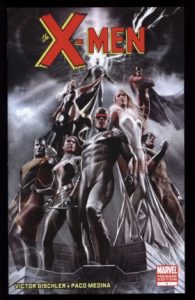
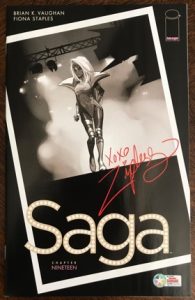











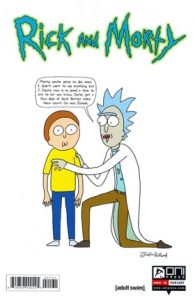
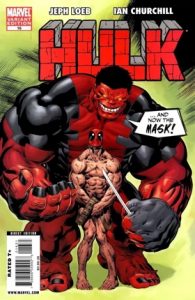




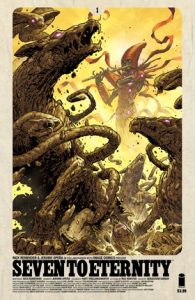
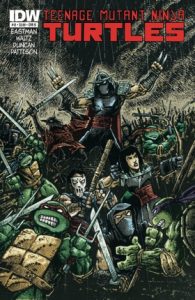














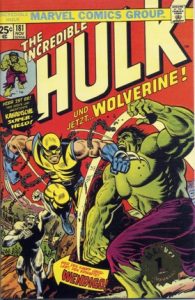

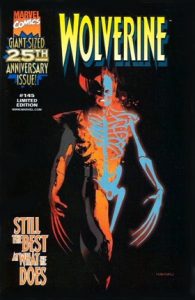




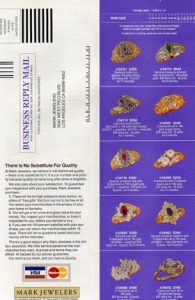





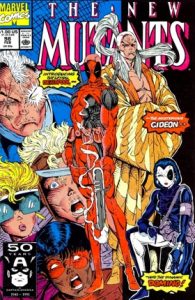









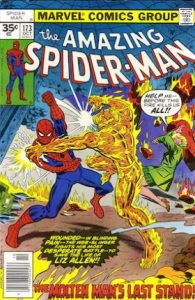


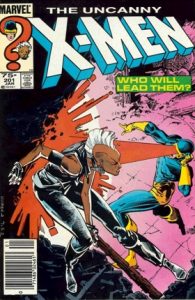













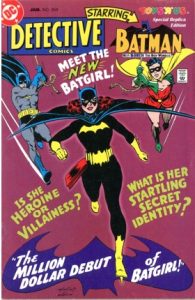

 Spider-Man 2099 Toy Package
Spider-Man 2099 Toy Package
 Superman vs. He-Man Toy Package
Superman vs. He-Man Toy Package